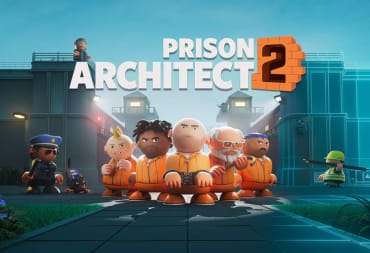Developer/Publisher combo Sometimes You sprang up in the mid-2010s to carve a niche in the "discount indie" space. As most mainline indies are climbing up towards the $15-$25 range, it's nice to have a reliably cheaper option when you're in the mood for an evening distraction. Which makes this 9th-gen upgrade a surprise unto itself. Newer versions of 5-year-old games still aren't a commonality at this point. Given what limited improvements and polishes have been made since there's no reason to be ex-static for Energy Cycle.
The baseline mechanics are relatively simple: a 2D puzzle game where all energized orbs must have the same matching color. The three default colors are light blue, navy blue, and green (but can be toggled in the options menu). Here's the catch: all connected cells – horizontally and vertically – also change color in tandem. Imagine several cells forming a t-shaped symbol. When you click at the bottom of the vertical line, all cells on said vertical shift to the next appropriate color; further, clicking the intersecting cell between vertical and horizontal shifts all of them at once.
Barely Any Sparks Of Ingenuity

You can probably see the potential conundrums at work. Initially, it starts off simple: maybe a couple of lines intersect while a few orbs are floating in the ether by their lonesome. The tougher mental demands come when you're looking at several crossing lines littered with differing colors. There are a few hard-set rules to uncover that help you subtly remove off-colored stragglers, but you have to be judicious with your clicks. Screw-ups can lead you back to square one.
Energy Cycle's issue is when shortcuts and stratagems set in there’s… nothing beyond that. Granted, this concept and the underlying mechanics are functional. The issue is being barren of any extra spark once everything seems manageable. The turning point for me came slightly after midway into the main campaign (28 puzzles total). That doesn't mean I instantaneously knew the procedure from there on; it's more that even later solutions couldn't avoid this trap of enabling anyone to stumble upon partially correct answers. You rarely get that sensation of a series of dominoes falling over after that a-ha! moment; rather, it's more about mentally solving the right solution and now making the game catch up.
Aside from Puzzle Mode's pre-made conundrums, Time Attack and Infinite Play try to spice things up with randomized challenges. Although they're unexpected additions for a cheap title, the previous issue of recognizing useful strategies doesn't go away. Of the two, Time Attack is the only one that maintained my interest for several minutes. The perpetual puzzle race against a one-minute countdown is a solid concept, but it fizzles so quickly because of its laggard pacing. Grinding out 10+ bland brainteasers to arrive at one approaching a challenge is really tedious.
Shocking Presentation

The audio-visual splendor of a minimalist game typically isn’t a huge priority. I'm not against that either; in fact, I can enjoy Threes! just as easily on my phone or console because of its chill atmosphere and succinct sound design. Energy Cycle is the antithesis to that approach. The auditory vibrations that could be misconstrued as a soundtrack are so jumbled and discordant. Whether it's a baby softly laughing, a lady melodiously singing a few words, or various techno beats, background music is more shotgunned out to fill a void than have some overarching theme. Even the sound design for cursor movement and orb color-switching isn't satisfying.
Though not as flagrantly mismanaged, graphics are also a low point. With respect to functionality, it's strange how the default colors are limited to a narrow color spectrum. Starker differences would delineate them more and it wouldn't contradict the overall aesthetic. Displaying energy in such a limited color range seems contradictory. There's also this weird fascination with lightning-branded felines for the sake of it. After every finished puzzle, you're greeted with a Shutterstock-level picture of an angry electricity cat and a chart counting your clicks. Even the puzzle board and overall setup leave something to be desired.
Very Low Energy

I ought to preface this by saying I'm glad Sometimes You has found this comfortable avenue to continue making games. That doesn't mean I'll find all of their games to be successes either. Sprucing up Energy Cycle for next-gen only reveals inherent flaws that even a modest price point (and free upgrade) can't disregard. When a minimalist puzzle game mismanages its two fundamental pillars to such an extent, it's simply not worth your time.
TechRaptor reviewed Energy Cycle on Xbox Series X with a copy purchased by the reviewer. It is also available on PlayStation 5, PlayStation 4, Xbox One, PlayStation Vita, Nintendo Switch, & PC.
Review Summary
Pros
- Neat Concept
- Some Pleasant Backgrounds
Cons
- Poor Puzzle Pacing
- Mostly Lackluster Puzzle Design
- Annoying, Jumbled Soundtrack
- Stale Visual Presentation
Have a tip, or want to point out something we missed? Leave a Comment or e-mail us at tips@techraptor.net






